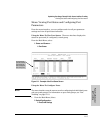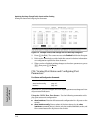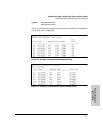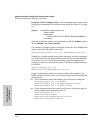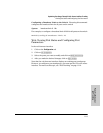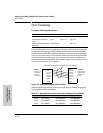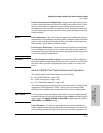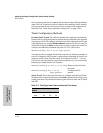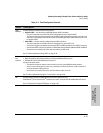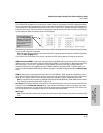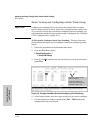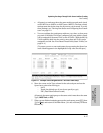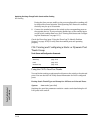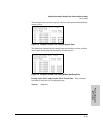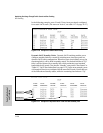
11-13
Optimizing Port Usage Through Traffic Control and Port Trunking
Port Trunking
Ports: Traffic Control
and Trunking
Table 11-4. Trunk Configuration Protocols
Protocol Trunking Options
LACP
(802.3ad)
Provides dynamic and static LACP trunking options.
• Dynamic LACP — Use the switch-negotiated dynamic LACP trunk when:
– The port on the other end of the trunk link is configured for Active or Passive LACP.
– You want to achieve fault-tolerance for high-availability applications where you want a four-link trunk
with one or more standby links available in case an active link goes down. (Both ends of the link must
be dynamic LACP.)
• Static LACP — Use the manually configured static LACP trunk when:
– The port on the other end of the trunk link is configured for a static LACP trunk
– You want to configure non-default spanning tree (STP) or IGMP parameters on an LACP trunk group.
– You want an LACP trunk group to operate in a VLAN other than the default VLAN and GVRP is disabled.
– You want to use a monitor port on the switch to monitor an LACP trunk.
See “Trunk Group Operation Using LACP” on page 11-25.
Tru nk
(non-
protocol)
Provides manually configured, static-only trunking to:
• Most HP switches and routing switches not running the 802.3ad LACP protocol.
• Windows NT and HP-UX workstations and servers
Use the Trunk option when:
– The device to which you want to create a trunk link is using a non-802.3ad trunking protocol
– You are unsure which type of trunk to use, or the device to which you want to create a trunk link is
using an unknown trunking protocol.
– You want to use a monitor port on the switch to monitor traffic on a trunk.
See “Trunk Group Operation Using the “Trunk” Option” on page 11-28.
FEC Provides static trunking to forwarding devices that also support FEC (Fast
EtherChannel
®
), such as some Cisco
®
switches and routers, and some HP-UX and Windows NT servers.
See “Trunk Operation Using the FEC Option” on page 11-29.



